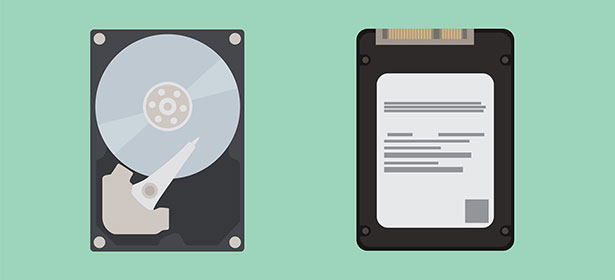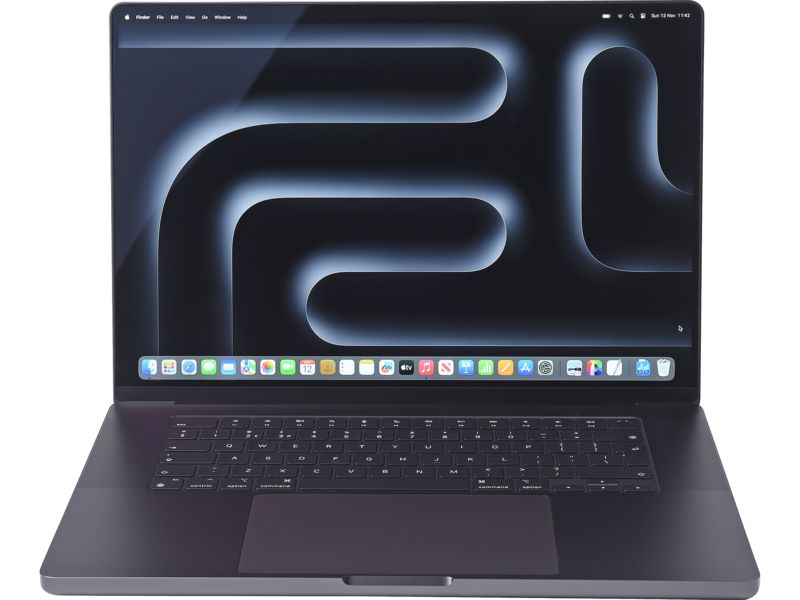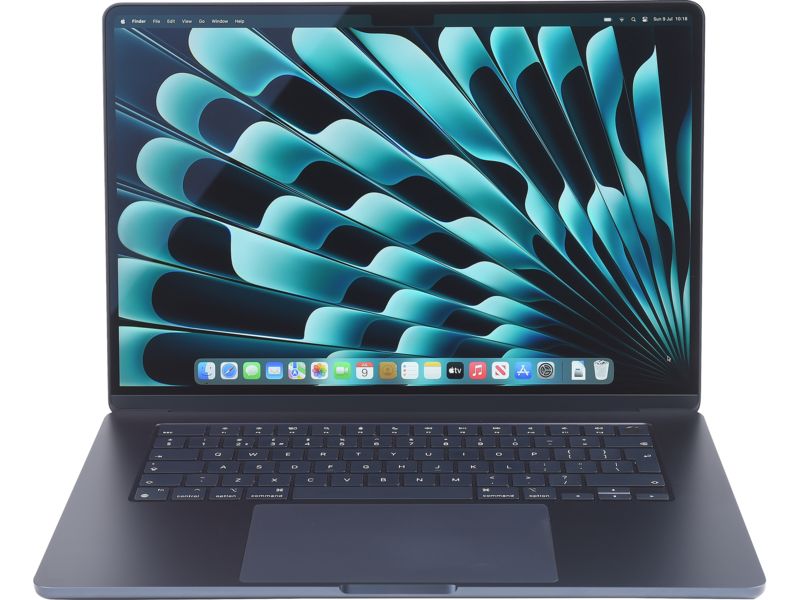SSD vs HDD: what's the difference and which is better?

A computer with a built-in solid-state drive (SSD) will give you faster startup speeds, slicker data-writing when copying files, and a snappier process for opening and swapping between programs, compared with a standard hard disk drive (HDD).
The downside is price. The improved technology of SSDs costs more, so you may need to compromise on storage space to keep costs down. We explain all you need to know so you can buy a computer with confidence.
Whatever your budget, our lab tests reveal which models are worth your money and which aren't. See our expert pick of the best laptops.
What is an SSD?
SSDs use technology called flash storage that’s controlled entirely by electronic transistors.
An SSD differs from a standard HDD (hard disk drive) because it uses no moving parts. An HDD uses a magnetic spinning disk and a high-speed arm to load and save data. This process is much slower than the read/write speeds you can get from an SSD.
You can buy external SSDs to plug in to your computer for backing up files. But for fast computing with speedy start-ups, you can choose a computer with an SSD built in.
SSDs vs HDDs: Pros and cons
- HDD pricing: HDDs are much cheaper than SSDs. You can buy a 2TB (2,000GB) external hard drive for around £50 and it’s even cheaper for a manufacturer to build one of these into a laptop or desktop.
- SSD pricing: SSDs are far more expensive and you get less storage capacity for the same money. That same £50 would only get you a 512GB SSD external drive.
- SSD longevity: SSDs don't have any moving parts so they are far less susceptible to being damaged by bumps and knocks compared to a hard disk.
- SSD warranty limitations: SSDs also have a finite lifespan and many that come with warranties are limited by the amount of data written to the SSD as well as a time limit. More expensive SSDs have longer warranties and higher write limits - for example, the Samsung 960 Pro 512GB has a five-year warranty, or a limit of 400 terabytes (400,000 gigabytes) write warranty; while a cheaper Evo model only has a 200TB write limit. This isn't to say the drive will immediately fail once you reach that figure. Keep in mind if your laptop comes with an SSD this sort of limit is unlikely to apply as the warranty for the entire laptop encompasses all components, including the SSD.
Is an SSD really worth it?
In short, yes. SSDs can make as much difference to a laptop or desktop as a more powerful processor and more Ram. You’ll really feel the difference an SSD can make when the computer boots up.
Of course, if you're upgrading from an old computer that takes more than a minute to start up, simply having a new computer with a fresh and modern hard drive will make it feel much faster. Recent laptops tested that have hard disks boot up in about 20 seconds.
However, the best laptops with SSDs can now boot up in about five to 10 seconds. This difference will only become more stark as you add more programs and files to your computer, causing it to gradually slow down over time. An SSD will keep your computer feeling faster for longer.
There’s also a big difference when opening programs and loading webpages. Your day-to-day computing will feel faster all round. Once you’ve used a laptop with an SSD, it’s hard to go back to a regular HDD.
A side benefit of SSDs is that, as they have no moving parts, they are completely silent. In other words, no annoying hums or clicks coming from the hard drive while you're trying to concentrate. They are also much less badly affected by drops and knocks because the only physical pieces that can be damaged are the connections themselves, versus a fragile spinning disk, motor and arm inside a standard hard drive.
News, deals and stuff the manuals don't tell you. Sign up for our Tech newsletter, it's free monthly
Types of SSD
There are different types of SSD available in laptops and desktops, some of which are better than others. While you won't often see the exact type specified on a retailer's website, if you delve into the techie details on the manufacturer's website you might be able to work out what type of SSD a computer contains.
In some laptops, it's possible to chop and change the SSD, but many manufacturers nowadays stick the drive to the motherboard with solder, making them impossible for the average home user to remove. This includes all MacBook laptops released in the past five years or more.
Sata: cheapest and most basic SSD, but still fast
Sata drives are the slowest form of SSD; but bear in mind that by slowest, we mean 'least fast'. They can still deliver speeds that are more than good enough for most people.
They typically come in the form of small, 2.5-inch drives that are slotted into your laptop or desktop and connected by two cables: one for power and one for data. They can also take the form of so-called 'M.2' drives, which are much smaller and slip into a tiny slot on the computer's motherboard.
There are different types of Sata drive, but as a general rule the more you pay, the faster a drive you get. The differences between them will be down to the types of microchips and memory a given SSD manufacturer has chosen to use.
A basic 512GB Sata SSD from SanDisk starts at about £50, but you can pay more than £100 for a model from Samsung with faster speed claims.
Looking for a good laptop and want to save money? See our expert pick of the best laptop deals
M.2 NVME: faster, but pricey
Standing for non-volatile memory express, these drives are the fastest SSD technology that's affordable for the everyday buyer. They can be up to five times as fast as a standard Sata SSD.
While this won't make noticeable difference when doing basic tasks such as web browsing and editing documents, it can make games run more smoothly and will mean huge files, such as videos, load faster. This could be particularly handy if you edit videos regularly.
If you're paying more than £1,000 for a laptop, you should expect this sort of drive, especially if it's a laptop designed for video editing or for gaming.
Most NVME drives in laptops will use the M.2 connection standard mentioned above.
As with Sata drives, there are different levels of NVME storage speed. Look for manufacturers' claims as these are a good way of understanding what sort of speeds you'll get.
A cheap 512GB NVME starts at around £70, but the price balloons to more than £150 if you go for a big-brand model, such as a Samsung Pro, with faster speed claims.
What about eMMC?
Some retailers might tell you that a cheap laptop with an eMMC (embedded multi-media card) drive is an SSD. Technically this is correct, but eMMC drives are quite different to conventional SSDs and the perks aren't anywhere near as good.
eMMC drives are typically found on cheap laptops costing less than £300, because they themselves are cheap to manufacture. They are, crudely put, like running a computer from an micro-SD card of the type you'd find in a phone or camera.
They tend to have a low capacity, typically 32GB or 64GB, and are much slower than a proper SSD. This isn't to say that they're bad – on a cheap computer with a relatively slow processor, it makes sense to use a slower eMMC drive, since a low-power processor won't take full advantage of the extra speeds of a proper SSD.
The tech specs pages on all our laptop reviews will say whether a computer has SSD or eMMC storage.
Looking for a good laptop on a tight budget? Find out which ones won't slow you down too much in our guide to the best cheap laptops.























